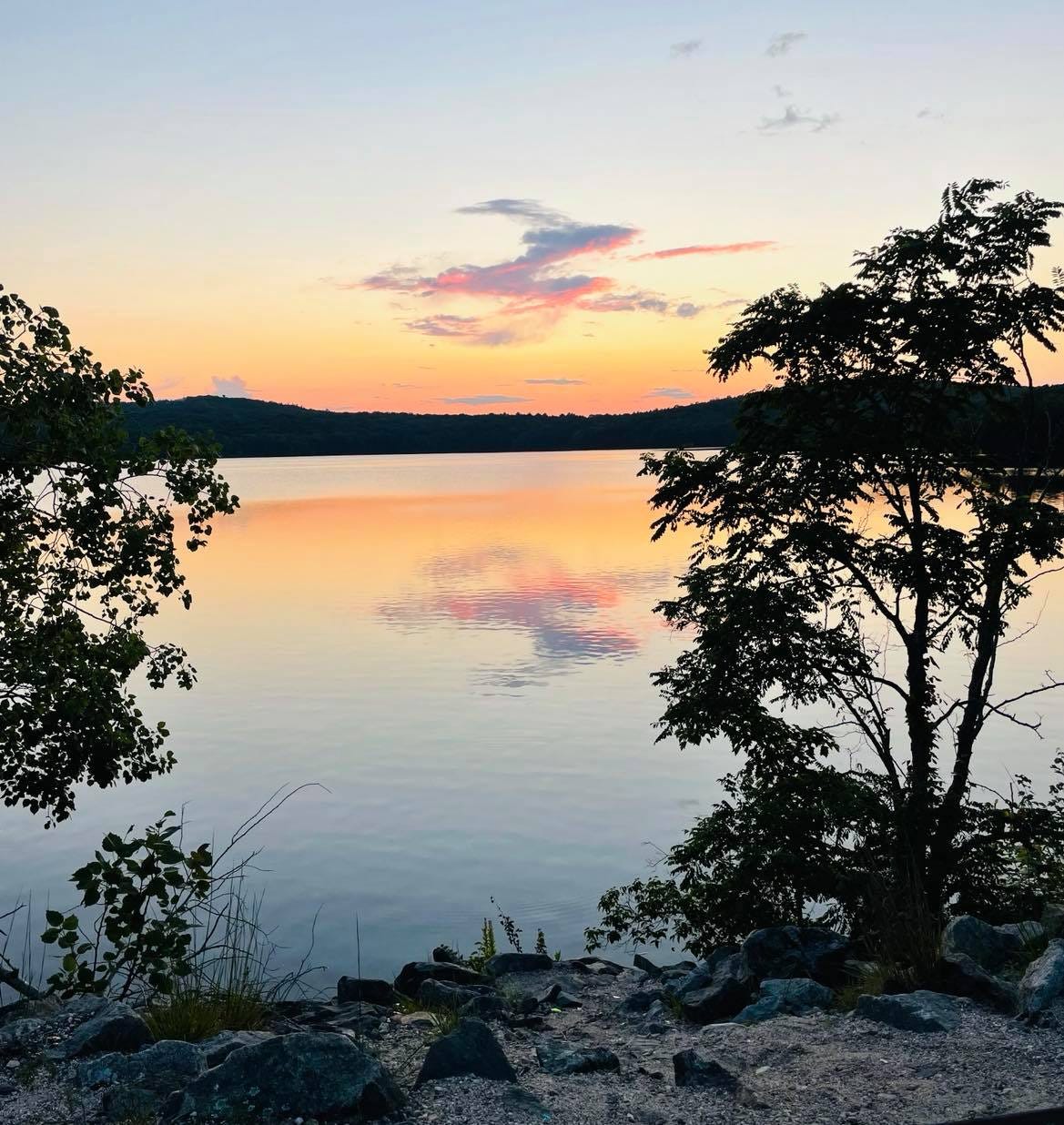It wasn’t so long ago that we were all thinking about reducing our carbon footprint, right?
It’s Saturday morning and we’re sitting up in bed drinking coffee. Both of us have our computers open on our laps, the square tray holding our cups is balanced between us on the bed, and our curtains are flung open to dappled sun on the greenery outside our window. It’s going to be another beautiful summer day.
I’m reading an article from the New York Times out loud to my spouse Janyce.
“It says that avoiding crowded spaces and wearing a mask when you’re indoors and don’t know the vaccination status of those around you is a good idea,” I say. “ We’re back to that.”
I take a long sip from my coffee cup. The air wafting in from the window on my side is cool and smells sweet, like freshly-mown grass. Off in the distance, I can hear someone yelling.
“Is that a kid or an animal?” says Janyce.
“It’s a kid,” I say.
“What is the difference, really?” she says.
Both of us laugh. This is a Janyce thing. I tell her all the time that she is going to scare our grandchildren. “You know that they are going to come crying to me, right? Saying ‘Grammy, why is Yia Yia so mean?’”
Yesterday, we sat side-by-side together at a picnic table, Janyce angling the black umbrella every few minutes to block the intense sun. The outdoor restaurant was full even at 5pm, our preferred time to drink cocktails and eat appetizers.
“Why are there so many kids here?” she said.
“If you were a parent of little kids, this would be your dream restaurant,” I said.
“I would never be a parent of little kids,” she said. “A dog, yes. Kids, no.”
“I think my kids would say you’re not so bad as a step-mom,” I said.
“I prefer the term consultant,” she said.
I glanced over at the picnic table across from us while we were waiting for our check. It was piled with plastic toys and strewn with handbags and empty margarita glasses. Beyond it, long green shadows stretched out onto the grass over by the band. A group of little kids ran by, dodging the teenage server carrying a tray of clear, full glasses of water beaded up with droplets on the outside, glistening in the sun. Behind us, a young family chased a toddler who was wearing a miniature pink sleeveless dress and running through the tall meadow grasses. All around us, the restaurant stretched out, dotted with umbrella tables and fire pit stations circled by Adirondack chairs.
It was a quintessential summer night, beautiful and carefree, and yet, oddly unsettling, too.
I don’t know when it all started happening again. I have been enjoying my mask-less summer of freedom, taking a deep breath, hugging friends, and making so many social plans. But now, everything I listen to on the radio is all about breakthrough infections, mask mandates, and climate adaptation. Adaptation? It wasn’t so long ago that we were all thinking about reducing our carbon footprint, right? We were going to do things to stop climate change. But somewhere in this past year-and-a half of pandemic horror, all talk of climate change stopped. Climate change is no longer coming. Climate change is already here. And just like that, summer too, has lost all it’s innocence.
“I can’t get over how beautiful it is tonight,” I said signing the check, and leaving a whopping tip for the young server who will be returning to college this fall.
“Let’s take a drive,” said Janyce.
The other day I copied a paragraph and saved it onto my computer desktop.
United Nations Framework Convention on Climate Change
Adaptation is a global challenge faced by all with local, subnational, national, regional and international dimensions. It is a key component of the long-term global response to climate change to protect people, livelihoods and ecosystems. Adaptation action should follow a country-driven, gender-responsive, participatory and fully transparent approach, considering vulnerable groups, communities and ecosystems, and should be based on and guided by the best available science and, as appropriate, traditional knowledge, knowledge of indigenous peoples and local knowledge systems, with a view to integrating adaptation into relevant socioeconomic and environmental policies and actions.
We drove through the back roads of Cumberland, Rhode Island, stopping to pull over and snap pictures of clouds and the horizon line. We slowed the car way down so we could gaze onto the empty fields of old farmland slipping by, and finally pulled over completely to join a row of cars parked along the side of the road. Several teens had gotten out to sit on the roofs to watch the sun setting over the water.
It was all so beautiful it gave me a lump in my throat. I took a photo from my smartphone camera, but it couldn’t quite capture the reality of the scene.
“I'm going out for a jog right now,” says Janyce. “Can you wait for me for breakfast?”
“Sure, I’m waiting to hear back from Aidan,” I say.
My youngest son called me this morning with upsetting news. “I’m so stressed out, mom,” he said. I can hear the stress in his voice and I know the struggle he’s having trying to adapt to all the changes in his life right now. But I gave him the pep talk he needed to get through his sadness, and his fear, and to deal with first things first this morning. “Just one thing at a time, okay?” I said. “You have to adapt.” We all just have to adapt.





